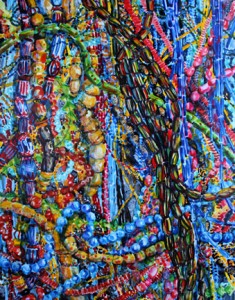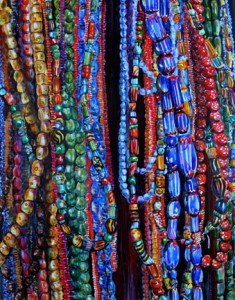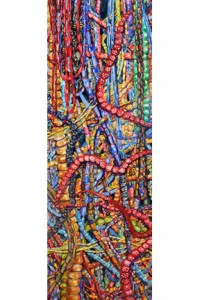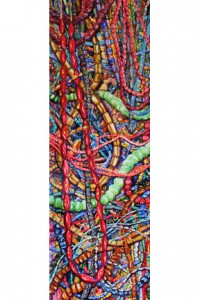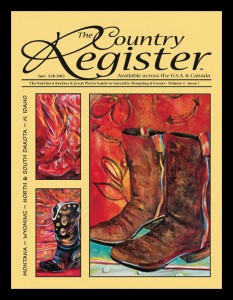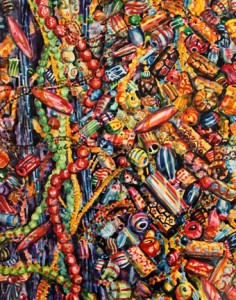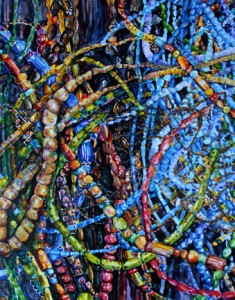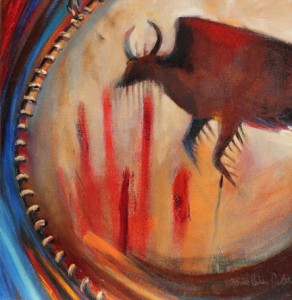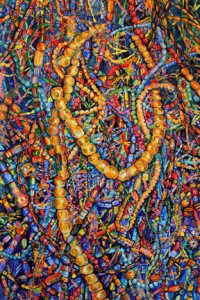 24 x 36” Watercolor on Clayboard
24 x 36” Watercolor on Clayboard
In reference to early trade goods and their use as currency in the beaver pelt trade. Magic to the touch, and glowing in the sunlight, trade beads such as these changed the world.
The ancient Egyptians made beads, and then the secrets to the process of creating glass beads was lost to time. The Venetians, famed with their glass-blowing skills yet today, eventually were able to duplicate the process, and this became a well guarded secret for generations. It was indeed a very powerful currency, until eventually the trade secrets were leaked, and beads were made world-wide. Still, a very material and time demanding process, what is viewed as a trifle with today’s technology, remained a very valuable form of currency as mankind spread around the globe.
This detailed and large-scale painting of vintage trade beads is framed in an antiqued gold deep frame, which accentuates the gem-like quality of the beads. To do paintings of trade beads has become a passion and one that I will continue to explore.


